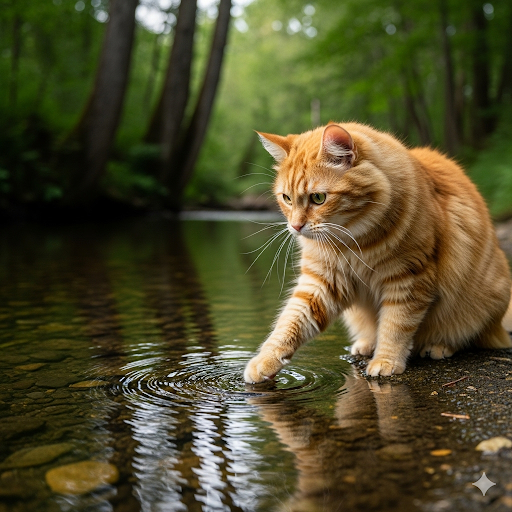
For millennia, cats have captivated us with their mesmerizing eyes. But what exactly do those eyes see? Can they truly appreciate the vibrant world of color like we do, or do they navigate a more muted landscape? The question of feline color vision has intrigued scientists for decades, and the answer, like a playful cat, remains somewhat elusive.
The Science of Seeing Color
Our ability to perceive color hinges on specialized cells in the retina called cones. Humans possess three types of cones, each sensitive to a specific range of light wavelengths - red, green, and blue. The combination of signals from these cones allows us to distinguish a vast spectrum of colors. Animals, like cats, also have cones, but the number and type vary, shaping their unique visual experience.
The Case for Limited Color Vision in Cats
Early research suggested cats, similar to dogs, have only two types of cones. This limited cone structure aligns with a type of color blindness in humans known as dichromacy. People with dichromacy typically struggle to distinguish between reds and greens, and the world appears less vibrant overall.
This theory is further supported by behavioral studies. When presented with tasks requiring color differentiation, cats often perform poorly compared to humans with normal vision. For instance, distinguishing between a red and a green toy might prove challenging for a feline friend.
Shades of Gray or a World of Blues and Yellows?
However, the story doesn't end there. Recent studies paint a more nuanced picture. Some researchers argue that while cats may not have the full spectrum of color vision like humans, they can likely perceive more than just shades of gray.
Their limited cone structure suggests they might be sensitive to blues and yellows, similar to how some dogs see the world. This would mean reds, oranges, and some shades of green would appear muted or confusing. Imagine a world where a red ball blends into the background foliage, while a blue jay stands out in stark contrast.
Beyond Color: A Cat's Visual Advantage
Even with potentially limited color vision, cats boast impressive visual capabilities that compensate. They possess a significantly higher number of rods in their retinas compared to humans. Rods are responsible for night vision, granting cats exceptional ability to see in low light conditions. This makes them formidable hunters, able to stalk prey with precision even under the cloak of darkness.
Additionally, cats have a wider field of view than humans, allowing them to take in a larger portion of their surroundings at once. Their superior depth perception also enables them to judge distances with remarkable accuracy, essential for those daring leaps and acrobatic maneuvers.
The Feline Visual World: A Mystery Still Unfolding
While research offers valuable insights, definitively determining the extent of feline color vision remains a challenge. Training cats for complex color discrimination tasks is difficult, and relying solely on behavioral observations can be inconclusive. Further studies incorporating electrophysiological techniques that measure brain activity in response to color stimuli might provide a clearer picture.
Living in a Cat's World: What Does it Mean for Us?
Understanding how cats see the world can help us better understand their behavior and cater to their needs. When choosing toys, opt for those in colors cats can likely perceive well, such as blues or yellows. Remember, their superior night vision means they might be startled by sudden movements in the dark.
More importantly, appreciating their unique visual perspective fosters a deeper connection with our feline companions. We can marvel at their exceptional ability to navigate in low light conditions and admire their keen depth perception that allows them to land those graceful jumps.
The Final Word: A World Painted in Blues and Beyond
Cats may not see the world in the full spectrum of color we do, but their visual experience is far from monochrome. Their limited cone structure suggests a world dominated by blues and yellows, with reds and some greens appearing muted. However, their exceptional night vision, wider field of view, and superior depth perception equip them for a life filled with adventure and precision.
The mystery of feline color vision continues to intrigue researchers, and future studies may offer even more fascinating insights. But for now, we can appreciate our cats' unique way of seeing the world, a world rich in movement, texture, and perhaps, a surprising array of blues and yellows.



